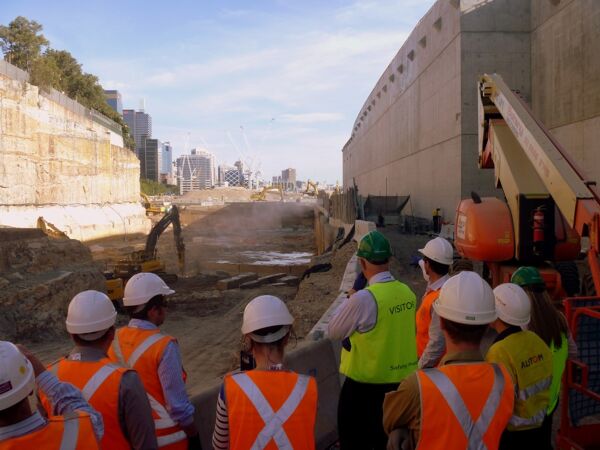
The £4.2bn Thames Tideway Tunnel scheme is being constructed to tackle the problem of sewage pollution in the River Thames with the promise of “reconnecting Londoners” by preventing millions of tonnes of untreated sewage flowing into the Thames each year. It is the largest infrastructure project ever undertaken by the UK water industry and will rid sewage to levels never seen for 250 years - before humans started polluting it.
Tideway will employ up to 4,000 employees across 24 sites of various sizes, stretching from Acton in the west to Abbey Wood in the east and is entering a major milestone moment. The end of summer is being pencilled in as the start of the much-anticipated tunnelling process with 1,300 tonne TBM’s lowered 53m deep at the organisation’s central site in Battersea. It is currently a hive of activity with the main focus on assembling gigantic sections of the machines which currently sit in the yard. The TBMs named Millicent and Ursula, will measure more than 100m long when fully assembled.
Lessons learned from Crossrail
While Tideway gears up for the major tunnelling process, Crossrail has not long finished completing their own excavation work. Those behind the massive water project say there are "lots of lessons to be learnt" from their counterparts with many involved in the rail project now adding similar knowledge and expertise to Tideway.
Michael Appleton, communications lead for the central section of Tideway, said: "Construction is a continuous improving process. It’s all about finding new and better ways of doing things."
The tunnel itself will work by intercepting sewage from 34 Combined Sewer Overflows (CSO) before it moves into the Thames. The CSO discharge points will be connected to the tunnel under the river and rather than flowing into the Thames, the dirty water will be stored in the sewer. It will then be pumped to the Beckton Sewerage Treatment Works and once treated, the clean water will be finally released into the river.
A monumental year for the project
As work progresses across various sites, 2018 has been dubbed as a monumental year for the project and once that will go a big way in defining how much of a success it is.
Andy Mitchell, Tideway’s chief executive officer, said: "This is going to be a big year for Tideway and we’re working hard to get tunnel shafts completed in preparation for the start of tunnelling later this year. The arrival of Tideway’s second and third TBMs was another exciting milestone, signalling that work is gearing up on London’s super sewer."
Tideway’s strapline is "reconnecting Londoners to the Thames" and that is exactly what the lasting legacy is hoped to be so that the general public won’t simply use the river for transportation but enjoy it as the asset it once was for the capital.
"The aim is a cleaner and healthier River Thames," Appleton said. "If you talk to rowers down at Putney then they say if they fall in, they have to go to A&E because you end up with all sorts of diseases. The attitude to the river in the past has been almost something of an obstacle or inconvenience. But really, it’s the reason we are here and is the lifeblood of London so cleaning it up is really important. People don’t use the river as a place to enjoy and allowing Londoners to reconnect with the river will be the lasting legacy."



